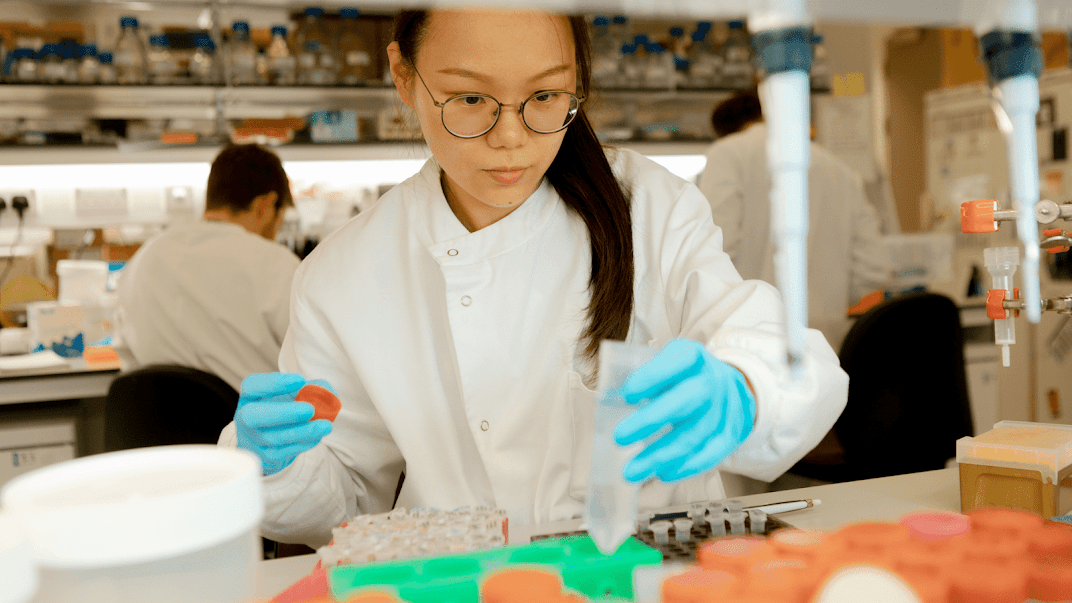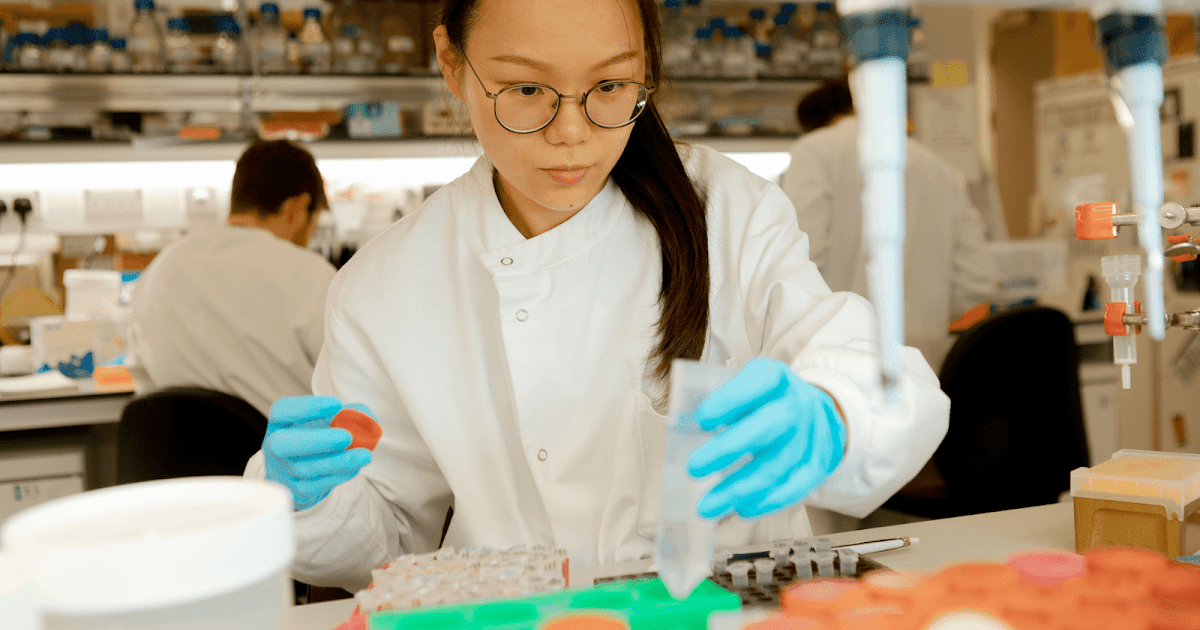Influence

Creating a greater malaria vaccine with the assistance of AI that might save tons of of hundreds of lives yearly
When biochemist Matthew Higgins established his analysis group in 2006, he had malaria firmly in his sights. The mosquito-borne illness is second solely to tuberculosis when it comes to its devastating world impression. Malaria killed an estimated 627,000 folks in 2020, principally kids beneath 5, and virtually half of the world’s inhabitants is inside its attain, although Africa is by far the toughest hit. Signs of an infection can start with only a fever and a headache, making it simply missed or misdiagnosed – and subsequently left untreated.
Stopping malaria is subsequently the precedence, which is why Higgins, a professor of molecular parasitology on the College of Oxford, has been working tirelessly along with his staff to know how the malaria parasite interacts with human-host proteins. Their purpose is to make use of these insights to design improved therapies, together with a vaccine that shall be far more efficient than what’s at the moment accessible.
When a human is bitten by an contaminated feminine mosquito, certainly one of 5 sorts of malaria parasite could enter the bloodstream. These single-celled parasites are usually carried to the liver, the place they mature and multiply, releasing extra into the bloodstream. Signs corresponding to fever, chills, fatigue, and illness may not seem till 10 days to 4 weeks after an infection happens, but the velocity of prognosis is crucial. Of the 5 parasite species that trigger malaria in people, two are significantly harmful. For instance, an an infection by Plasmodium falciparum can, if untreated, all of a sudden escalate to extreme sickness and dying inside a day.
The important thing problem for Higgins is the shapeshifting nature of malaria parasites. Their capacity to always alter their look in addition to that of their host (purple blood) cells permits them to evade the human immune system. “By way of drug, or vaccine, discovery, that makes it exhausting to pin it down and determine what to focus on,” he says. The potential for a totally efficient vaccine – the one solution to cease malaria in its tracks – appeared distant.
The urgency of the race to develop an efficient vaccine is underlined by the variety of groups working in direction of that aim. At present, RTS,S, broadly recognized by its model identify Mosquirix, is the one authorized inoculation. It was designed for youngsters and in October 2021. Its arrival was a “big development” and “superb information”, says Higgins. As a result of RTS,S targets solely step one of an an infection, by which the malaria parasite is carried to the liver, it solely has a couple of 30% efficacy fee. “30% is an enormous deal. It means a whole lot of lives saved,” he says. “However it’s a great distance in need of the 100% we wish.”
“
Once we mixed our mannequin with Alphafold’s predicted construction, we might all of a sudden see how the entire system labored.
Matthew Higgins, biochemist
Extra lately, one other staff on the College of Oxford – the Jenner Institute – reported promising outcomes of one other comparable vaccine. Its strategy, which consists of three doses adopted by a booster one 12 months later, has an efficacy fee of 77%. Nonetheless, like Mosquirix, this vaccine intercepts on the first, pre-liver stage of the malaria parasite’s life cycle.
In distinction, Higgins – alongside along with his Oxford-based collaborators Simon Draper and Sumi Biswas – is growing vaccine immunogens for a multi-stage vaccine that may concurrently work at each section of the an infection cycle. Past the parasite’s preliminary entry into human liver cells, the lab’s final aim is a vaccine that may not solely goal the blood-cell invasion that follows an infection, but in addition the ultimate reproductive stage of the parasite’s life cycle, which includes the fusion of its female and male gametes. It’s essential to sort out this stage, as a result of contaminated people can in any other case transmit the parasite to beforehand uninfected mosquitoes if bitten once more, persevering with the cycle.
Progress has been hard-fought and gradual. For example why, contemplate the COVID-19 virus. One of these coronavirus has only one spike protein on its floor {that a} vaccine wants to focus on. The malaria parasites, alternatively, have tons of and even hundreds of floor proteins, in accordance with Higgins. And it’s a slippery shapeshifter.
Crucially, growing a vaccine that comprises a crucial infection-disrupting element requires understanding the molecular construction of 1 gamete floor protein – Pfs48/45 – important to the event of the parasite within the mosquito midgut. That is the place Higgins and his staff acquired derailed. For years they tried to decipher the protein’s form, with restricted success. Even utilizing two of the most effective experimental strategies accessible to discern a protein’s construction – X-ray crystallography and cryo-electron microscopy – the researchers might receive solely fuzzy, low-resolution photos. Consequently, their structural fashions of Pfs48/45 have been essentially imperfect and incomplete.
That was, till AlphaFold arrived.
“We’d been battling with this drawback for years, attempting to get the main points we would have liked,” says Higgins. “Then we added AlphaFold into the combination. And after we mixed our mannequin with Alphafold’s predicted construction, we might all of a sudden see how the entire system labored.” Higgins recollects the thrilling second that his PhD scholar Kuang-Ting Ko – “who had been attempting all kinds of various issues to enhance the experimental photos” – burst into the workplace with the information.
“
AlphaFold has allowed us to take our mission to the following stage, from a elementary science stage to the preclinical and medical improvement stage.
– Matthew Higgins
“It was an ideal reduction,” says Higgins, and a turning level for the mission. The mix of laborious experimental work and AI prediction rapidly resulted in a pointy view of Pfs48/45. “The essential AlphaFold info enabled us to determine which bits of the protein we wish to put in a vaccine and the way we wish to arrange these proteins,” says Higgins. “AlphaFold has allowed us to take our mission to the following stage, from a elementary science stage to the preclinical and medical improvement stage.”
AlphaFold just isn’t with out its flaws, in fact. Higgins famous that whereas the AI system labored nicely in predicting how every module inside a protein adopts its construction, there have been situations when its 3D visualizations have been a little bit off. To get essentially the most correct and assured outcomes, AlphaFold is finest used alongside extra conventional instruments corresponding to cryo-electron microscopy, he says. “I’m positive AlphaFold’s predictions will get higher and higher. However for now, combining experimental data with AlphaFold fashions is the optimum strategy, as a result of it permits us to piece every thing collectively. That is the strategy which we’re taking for a lot of of our initiatives.”
Higgins’ collaborator, Professor Sumi Biswas shall be conducting a human medical trial of Pfs48/45 in early 2023. Now that the construction of Pfs48/45 is known, this may enable the Biswas and Higgins teams to work collectively to know the immune response generated in these vaccination trials, and to design improved vaccines. Within the pursuit of growing a vaccine that works at each stage of the malaria life cycle, Higgins can be making strides in understanding one other goal, a big protein complicated key within the stage of malaria the place the parasites infect the purple blood cells, inflicting the onset of signs. Utilizing a mix of AlphaFold and cryo-EM, the staff is working exhausting to know how this complicated matches collectively.
Wanting additional up the street, Higgins envisions AlphaFold as a crucial expertise for creating new, helpful proteins from scratch, a course of often called de novo protein design. “The way forward for AlphaFold might not be a lot in predicting the molecules which exist already in cells, however quite in predicting the buildings of molecules that persons are designing for particular purposes, corresponding to vaccines,” he says. “If we’re capable of design proteins after which use AlphaFold to foretell in the event that they’ll fold up the way in which we want them to, that’s going to be very highly effective.”
Source link
#Stopping #malaria #tracks










